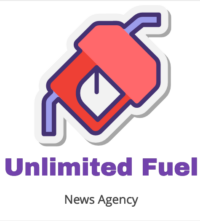Although every SEO campaign might have different objectives, the majority of online publishers share the desire to obtain any or all of the following five outcomes from their optimization investment:
Read More: digital marketing
1. Increased exposure in search engine results
When searching for a solution, most Google users stick to the first page of results, with 75% of users clicking on the first or second result. Ranking higher in the search results for more queries is a primary objective of SEO as a result of this behavior. Your work has a greater chance of being discovered and selected by the public if it is more visible.
It’s critical that website owners understand at this point in their education that search engine optimization is a myth, and that companies like Google display different results to users depending on a variety of factors, including device location and even slight variations in query language. Being highly visible to your target audience for your most essential queries across a variety of SERP styles and characteristics is a more desirable objective than ranking first.
2. Increased visits to your website and other resources
“Traffic” is the term used to describe the number of searchers who find your website by clicking on the organic SERPs. The SEO industry is divided on the question of whether the click-through-rate (CTR) to your website pages from the SERPs affects Google’s organic rankings. Bing affirms that they consider bounce rate—the speed at which visitors depart your website after landing on it—as well as CTR as ranking variables. Nevertheless, it makes sense that one objective of SEO work is to increase the amount of traffic that comes from the SERPs to your online assets, even though the specifics of search engine algorithms are still a mystery.
3. Increased quality traffic to your assets, such as your website.
Gaining a ton of traffic from the SERPs may initially seem like the dream come true for any website owner, but in most cases, it won’t have an effect on fundamental business objectives until the traffic results in sales or other important activities. For instance, a San Francisco-based independent doughnut store may rank #1 on Google for sourdough doughnuts. It could become well known after going viral on social media as part of an oddball or humorous marketing effort. Through these rankings and efforts, it may attract visitors from across the country or even the world, but as its product is only genuinely accessible for purchase in its home city, the majority of this traffic is unlikely to result in sales and may even serve to bolster the company’s viability only ostensibly.
since a result, using SEO to strategically plan how to attract the most qualified visitors for your offerings is a better objective than just hoping for a large volume of traffic to your digital assets, since this will usually have the greatest conversion rate. If you want to get high quality organic traffic, search engines must think that the queries you find have a high enough relevancy with your content to lead to conversions. Conversions can be anything from sales to form filling out to phone calls to leads to customers staying on your website longer. More information on assessing traffic quality may be found in Adriana Stern’s blog article tutorial.
4. Increased public comprehensibility
Seeing SEO as a type of customer service is among the finest things you can do to learn about it. Publicly helpful material is rewarded by Google. Actually, a major portion of their 2022 Helpful information algorithm change was on rewarding websites that consistently post information that is actually helpful to searchers. Google has been advising website owners to produce content for users rather than search engines for decades.
SEO may make your website easier for potential users to understand, find, and use. Both the appearance of your content in the SERPs and how it appears and behaves when searchers click through to your digital assets are influenced by optimization. One of the most sensible reasons to spend money on SEO is to give the public excellent service and an excellent user experience.
5. Increased search engine comprehensibility
Your website and other assets must make sense to the crawlers, spiders, and bots that organizations like Google and Bing utilize to crawl and index digital information if you want search engines to showcase and reward your content and give you the exposure, traffic, and conversions you need. This is accomplished by a variety of SEO initiatives, which may be divided into:
On-page SEO, which mostly entails optimizing particular website page components to make their contents obvious and relevant
Technical SEO is primarily concerned with keeping your website’s technical backend up to date so search engines can efficiently scan, index, and understand it.
Off-page SEO is mostly about getting links, citations, publicity, and attention from other websites to increase the credibility of your online content.
When combined, these three SEO strategies help to make sure that search engines can match your content to the intent that users have expressed in their queries. Higher, more comprehensive, and highly-converting search engine rankings are more likely to be attained by material that is better understood by search engines. Next, we’ll examine each of these three ideas in further detail.
What SEO elements affect search engines?
Three main areas of concentration are often included in site optimization: technical, off-page, and on-page SEO.
The process of making your website’s content easier to read for both search engines and people is known as on-page SEO. Technical SEO is any appropriate technical action carried out with the goal of enhancing search results, typically by streamlining the operation of your website.
Taking steps outside of your website to influence your rankings is known as off-page SEO.
When taken as a whole, they provide a strong base that lets you connect with your intended audience.
